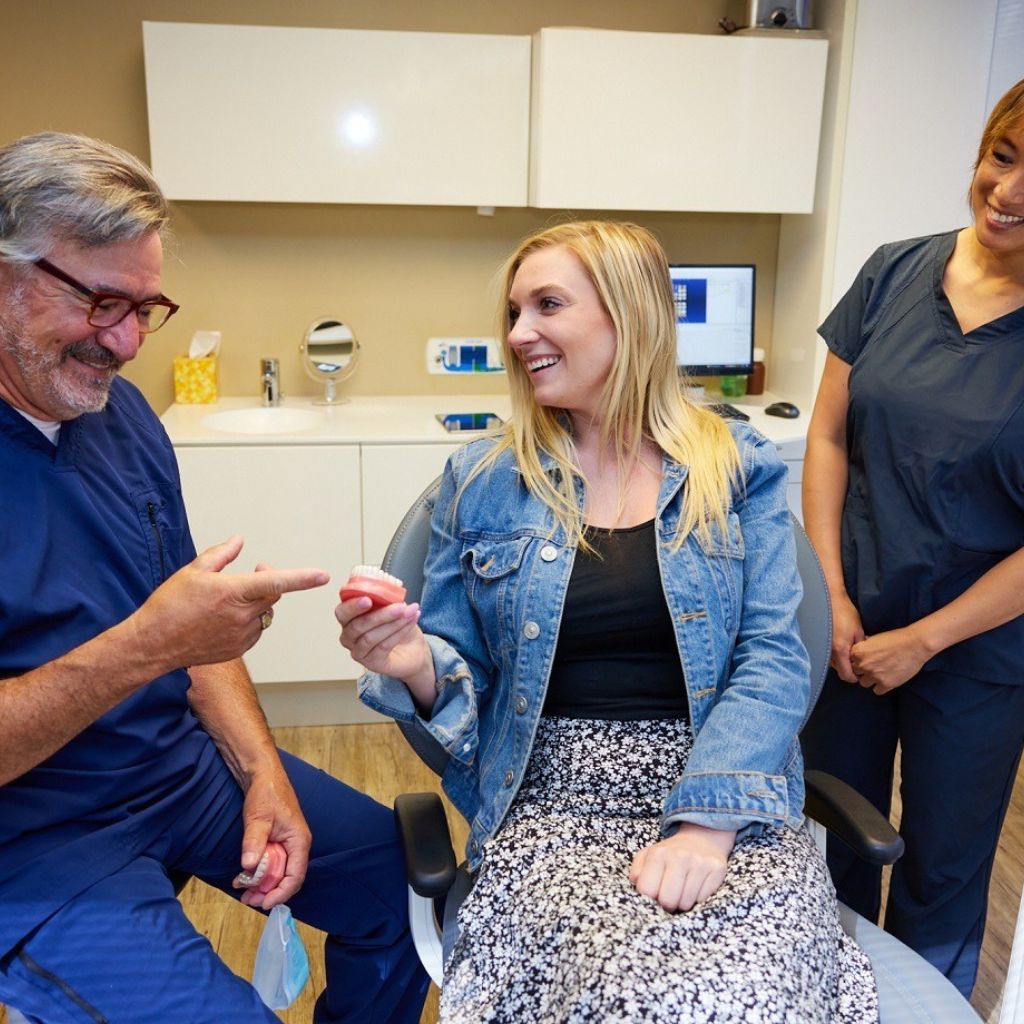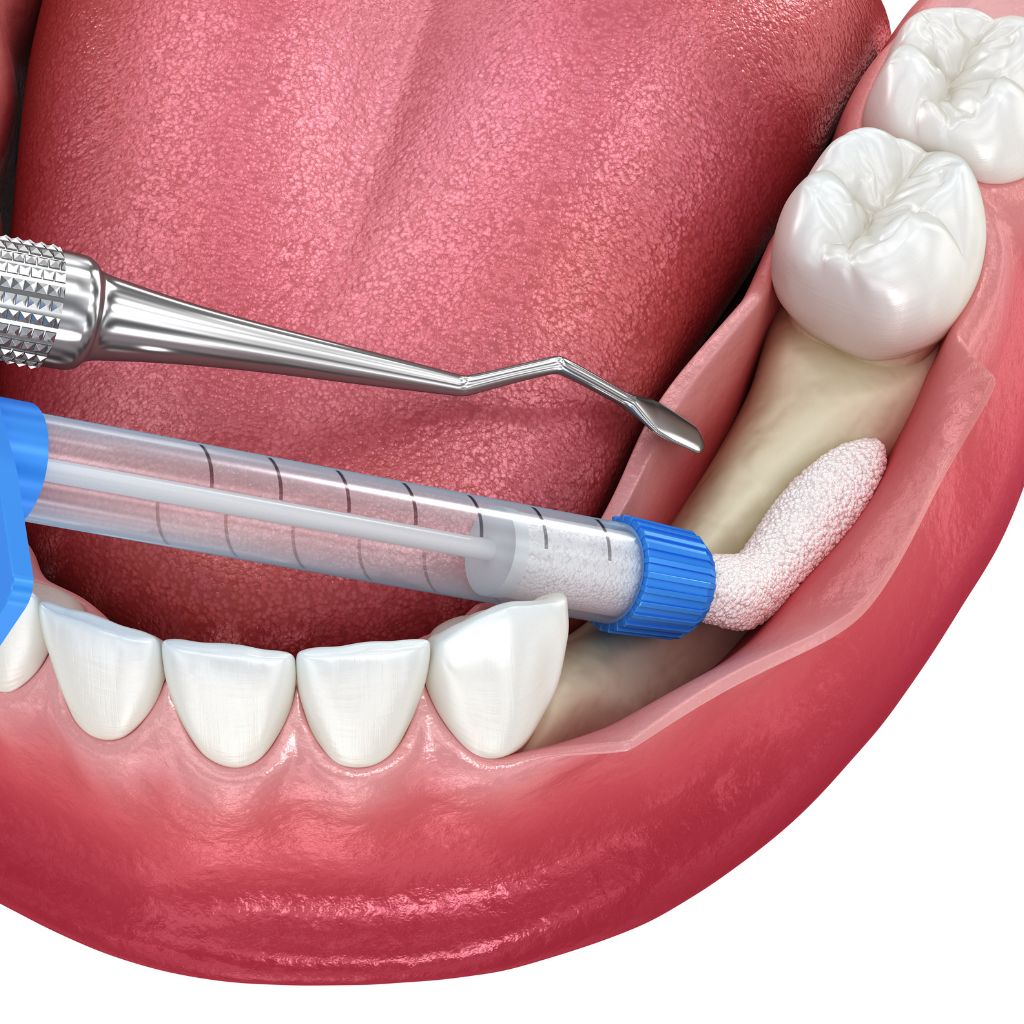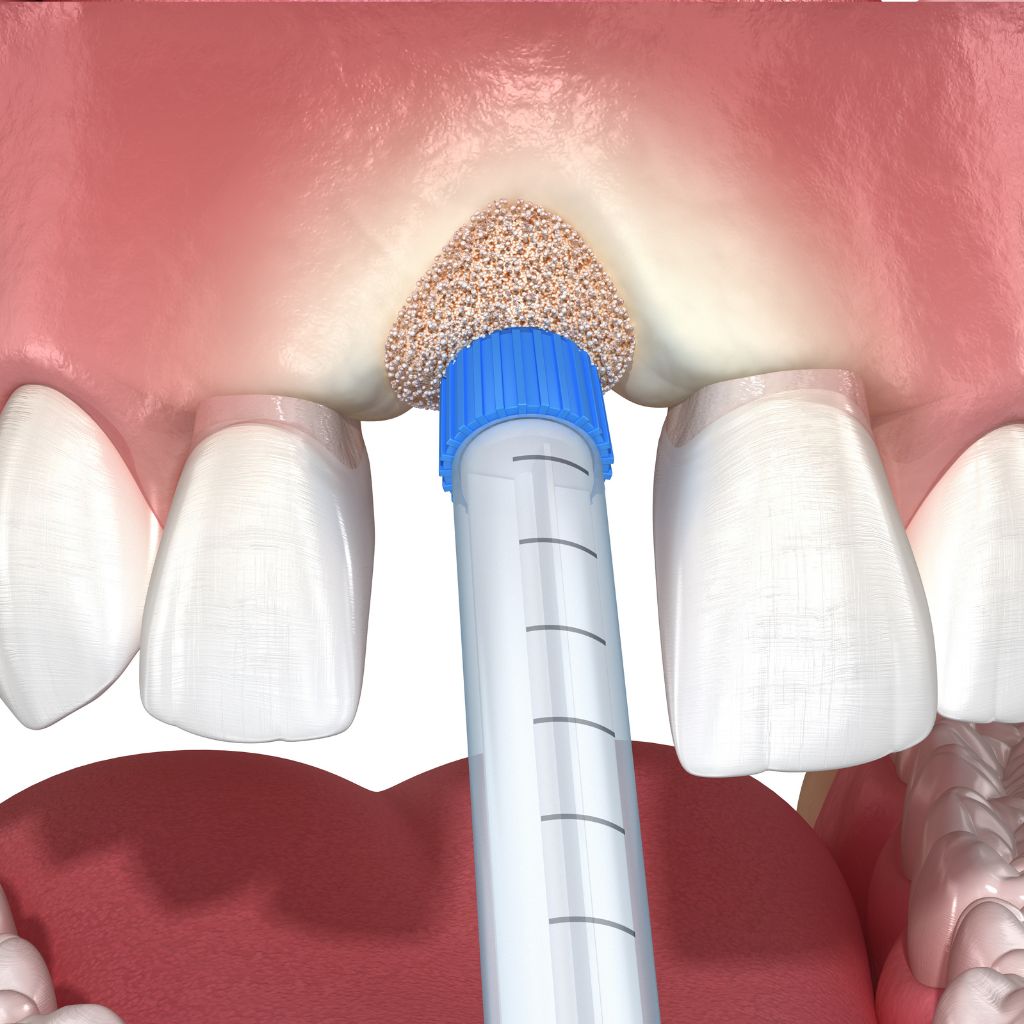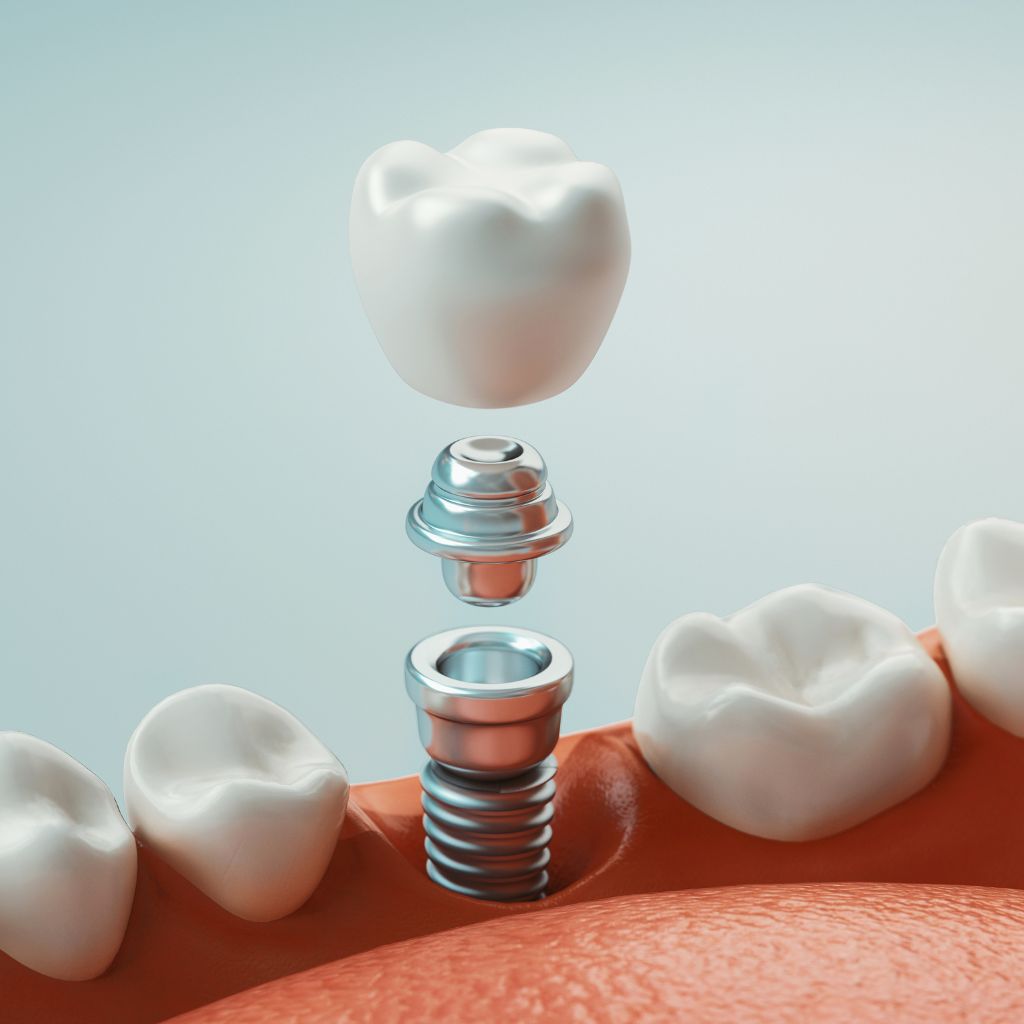BONE GRAFTING in Seattle, WA
Rebuild your oral foundation with professional bone grafting at Dental Specialties Northwest. Whether you’re preparing for dental implants or addressing bone loss from gum disease or injury, this procedure strengthens your jawbone and restores its structure.
Rebuild your oral foundation with professional bone grafting at Dental Specialties Northwest. Whether you’re preparing for dental implants or addressing bone loss from gum disease or injury, this procedure strengthens your jawbone and restores its structure. When jawbone density diminishes due to missing teeth, periodontal disease, or trauma, it can compromise your ability to receive dental implants and affect your facial structure over time.
At Dental Specialties Northwest in Seattle, Dr. Thomas Sweeney and Dr. Rhys Spoor use advanced bone grafting techniques to rebuild lost bone, creating the necessary support for procedures like dental implants. Our Columbia Tower practice provides personalized bone grafting care for Seattle patients, ensuring your treatment is comfortable, precise, and tailored to your needs.
Expert Specialty Dentistry Financing Available
World-class smile transformations and restorative treatments with payment plans designed for your budget.

What Is Bone Grafting?
Bone grafting is a surgical technique that repairs and strengthens the jawbone, creating a solid base for dental procedures such as implants.
The process involves strategically placing grafting materials—which can be derived from natural sources or created synthetically—into compromised areas of the jaw where bone density has diminished. As healing progresses, the grafted material becomes incorporated with the existing bone, stimulating new bone formation and regeneration. Many patients require this procedure when they’ve experienced substantial bone deterioration caused by missing teeth, periodontal disease, or injury.
At Dental Specialties Northwest, we employ state-of-the-art methods and scientifically validated materials to deliver the best possible bone grafting results for Seattle patients.
Rebuild the foundation of your smile. Let bone grafting restore your confidence and prepare you for a healthier, stronger future.
What is the Process of Bone Grafting?

Consultation
Your journey begins with a comprehensive consultation. Dr. Thomas Sweeney or Dr. Rhys Spoor will evaluate your oral health, discuss treatment goals, and use digital imaging to assess your jawbone condition. This examination determines the extent of bone loss and the most suitable type of graft for your needs. During this appointment, we’ll also discuss your medical history, any medications you’re taking, and answer all questions about the procedure, recovery, and timeline.

Preparation
On the day of your procedure, you’ll be prepared for surgery. The area will be cleaned and you’ll receive appropriate anesthesia. Depending on the complexity, this could range from local anesthesia to IV sedation, ensuring your comfort throughout the process.

Graft Placement and Closure
Your Seattle bone graft dentist will make a small incision to expose the bone, then carefully place the grafting material. For autografts, bone will be harvested from another part of your body. Once the graft is secured, the incision is closed with sutures, completing the surgical phase. The entire procedure typically takes 30-90 minutes depending on the complexity and number of graft sites being treated.

Healing and Integration
Over the next few months, your body will work to integrate the graft with your natural bone. New bone cells will grow, replacing much of the grafting material. You’ll need to follow specific care instructions to ensure optimal healing during this crucial period. Most patients experience minimal discomfort after the first week, though complete integration takes 3-6 months before you’re ready for dental implant placement.

Follow-up and Further Treatment
You’ll have periodic check-ups to monitor your healing progress. Once the graft has fully integrated and your bone has reached the desired density, you’ll be ready for the next phase of your treatment, such as dental implant placement. We’ll use diagnostic imaging to confirm successful bone regeneration before proceeding with implant surgery.
Why Is Bone Grafting Important?
Foundation for Dental Implants
A strong jawbone is essential for the successful placement of dental implants. Bone grafting ensures there is enough bone to securely anchor implants, providing stability and longevity for your restorations. Without adequate bone density, implants cannot integrate properly and may fail prematurely, making bone grafting a critical prerequisite for successful implant treatment.
Prevents Further Bone Loss
Bone loss doesn’t stop after losing a tooth. Bone grafting halts the progression of bone deterioration, preserving your facial structure and preventing premature aging. Studies show that jawbone can lose up to 25% of its width within the first year after tooth loss, making timely bone grafting intervention crucial.
Restores Jaw Function
By rebuilding your jawbone, bone grafting improves oral functionality, making it easier to chew, speak, and maintain overall oral health. Seattle patients who undergo bone grafting often report improved bite strength and the ability to eat a wider variety of foods comfortably.
Support for Periodontal Health
Bone grafting plays a crucial role in managing periodontal disease by slowing or halting its progression. This procedure can significantly improve the chances of saving affected teeth while restoring bone structure damaged by the condition. Our periodontal care team integrates bone grafting into comprehensive gum disease treatment plans.
Rebuild the foundation of your smile. Let bone grafting restore your confidence and prepare you for a healthier, stronger future.
Meet Our Seattle Bone Grafting Team
At Dental Specialties Northwest, we take pride in offering advanced care for patients requiring bone grafting. Dr. Thomas Sweeney and Dr. Rhys Spoor, leading providers in restorative dentistry, have extensive experience in rebuilding jawbone strength and structure. Using state-of-the-art techniques and materials, our team ensures every bone graft is tailored to your specific needs, providing a strong foundation for dental implants and improved oral health.
Our dedicated team works collaboratively to make your experience seamless and comfortable. From your initial consultation to the final stages of healing, we guide you through every step of the process, ensuring precision, care, and outstanding results. Restoring your jawbone at our Columbia Tower location isn’t just about functionality—it’s about enhancing your confidence and quality of life.
Types of Bone Grafting Procedures
Bone grafting is not a one-size-fits-all solution. The type of graft used depends on your unique needs and oral health condition. Your Seattle bone graft dentist will recommend the most appropriate option based on the location and extent of bone loss, your overall health, and your treatment goals.
Autograft
This type of graft uses bone from another part of your own body, usually the chin, hip, or another area in your mouth. Autografts offer the advantage of using your body’s own tissue, which reduces the risk of rejection and complications. Because autografts contain living bone cells, they often integrate faster and more predictably than other graft types, though they require an additional surgical site for harvesting.
Allograft
In this procedure, the bone used for the graft comes from a donor, typically from a cadaver. It is processed and sterilized to eliminate any risk of disease. Allografts are a common choice and offer a strong foundation for implants. This option eliminates the need for a second surgical site and has an excellent safety record with decades of successful use in dentistry.
Xenograft
This type of graft uses bone from another species, usually a cow. Xenografts are carefully processed to ensure they are safe for human use. These are a good option for those who may not have enough of their own bone available for grafting. Xenografts serve as a scaffold that your body gradually replaces with natural bone over several months.
Alloplast
Alloplast grafts use synthetic materials to stimulate the growth of new bone. This type of graft is an excellent option for patients who prefer not to use donor tissue or animal bone. Modern synthetic grafting materials are biocompatible and can be precisely engineered for optimal bone regeneration properties.
How Much Are Dental Bone Grafts in Seattle, WA?
Dental bone grafting procedures in Seattle vary significantly in cost based on the type and complexity of the graft. Simple grafts using synthetic, cadaver, or animal bone typically range from $300 to $1,200 per graft site. More complex autografts, which involve harvesting bone from the patient’s own body, require additional surgical procedures and consequently cost more. Overall, bone grafting costs in Seattle span from $300 to $3,500, depending on the specifics of each case, including the amount of bone needed and the location of the graft site.
During your consultation, we provide detailed cost estimates specific to your treatment plan and discuss financing options to make your bone grafting procedure affordable. Many Seattle patients find that dental insurance covers portions of bone grafting when it’s medically necessary for implant placement.
Rebuild the foundation of your smile. Let bone grafting restore your confidence and prepare you for a healthier, stronger future.
Why Choose Bone Grafting at Dental Specialties Northwest?
Advanced Techniques and Technology
At Dental Specialties Northwest, we combine advanced training with cutting-edge technology to ensure the bone grafting process is as precise and effective as possible. Our techniques are designed to restore your jawbone with minimal discomfort and maximum results. We utilize 3D imaging and digital planning to precisely determine graft placement and ensure optimal outcomes.
Personalized Treatment Plans
We understand that every patient’s needs are unique. Whether you’ve experienced bone loss from missing teeth, gum disease, or trauma, our team creates tailored treatment plans to meet your specific goals and ensure the best possible outcome. Your bone graft dentist in Seattle will consider factors like your bone density, overall health, lifestyle, and timeline to recommend the ideal grafting approach.
Seamless Patient Experience
From your initial consultation to comprehensive post-procedure care, we prioritize your comfort and satisfaction at every step. Our dedicated team is here to guide you through the process, helping you achieve a stronger foundation for dental implants and long-term oral health. Our Columbia Tower practice offers world-class care with spa-caliber amenities, creating a comfortable environment for your bone grafting procedure.
What Our Customers Say
Frequently Asked Questions
You might need a bone graft if you’ve experienced bone loss due to gum disease, injury, or missing teeth. Bone grafting is also a common step before placing dental implants to ensure the jaw has enough strength to support them.
You won’t feel pain during the procedure because of the anesthesia. Afterward, mild discomfort is normal and can be managed with over-the-counter or prescribed pain relievers.
Initial recovery takes about two weeks, but the full healing process can take several months as the graft integrates with your natural bone. Most patients can resume normal activities within a week.
You may notice some swelling, bruising, or minor bleeding in the first few days. These symptoms typically subside within a week. Over time, the graft will fuse with your jawbone, creating a solid foundation for future dental work.
It typically takes 3-6 months for the bone graft to integrate fully with your natural bone. Your dentist will monitor your progress and let you know when you’re ready for the next step, like dental implants.
True rejection is rare because the graft material doesn’t contain living cells. However, if the graft doesn’t integrate properly, additional treatment may be required. Following post-operative care instructions is key to success.
Good care is essential for healing. Brush and floss carefully, avoid hard or crunchy foods, and follow your dentist’s instructions. Avoid smoking and excessive pressure on the graft site to ensure optimal results.
Bone grafting has a high success rate, especially when performed by experienced professionals. Success depends on factors like your overall health, smoking habits, and adherence to aftercare guidelines.
Rebuild Your Smile Foundation in Seattle
At Dental Specialties Northwest, we’re committed to helping you achieve optimal oral health through advanced bone grafting techniques and compassionate care. Our Columbia Tower practice serves Seattle and the surrounding areas with world-class bone grafting and implant dentistry in a comfortable environment where your wellbeing and treatment success are our top priorities.
If you’re preparing for dental implants or experiencing bone loss, contact our Seattle team to schedule a bone grafting consultation. We’ll evaluate your jawbone health, discuss your treatment options, and develop a personalized plan to restore your oral foundation. Explore our comprehensive oral surgery services to learn more about procedures that support your dental health.

Rebuild the foundation of your smile. Let bone grafting restore your confidence and prepare you for a healthier, stronger future.
Visit Our Office
We’re conveniently located in downtown Seattle, WA, at 701 5th Ave, Suite 4660, in the Columbia Center. Enjoy stunning views, ample parking, and easy access to public transportation options for a seamless visit.
- 701 5th Ave, Suite 4660, Seattle, WA 98104
- 206-682-8200
- frontdesk@dentalspecialtiesnorthwest.com
